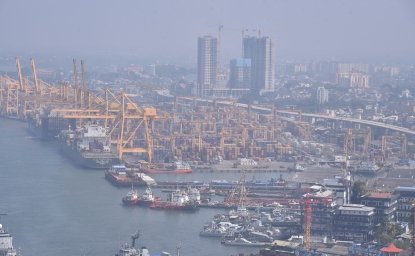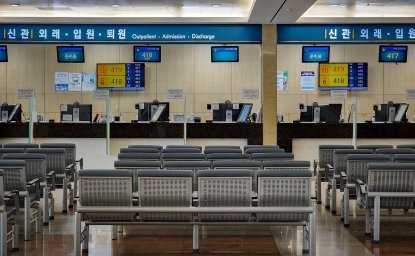
A blog of the Indo-Pacific Program
Is the Quad finally turning a corner in its relations with Southeast Asia? The minilateral grouping comprising Australia, India, Japan and the United States has certainly worked hard to rebuild its image after initially getting off on the wrong foot with the established regional order centered on ASEAN. This was evident in the recent statement issued by Quad foreign ministers following a meeting in Tokyo in July 2024, which highlighted the grouping’s “unwavering support for ASEAN’s unity and centrality, and the ASEAN-led regional architecture.”
Indeed, if the results of this year’s edition of the State of Southeast Asia survey are taken at face value, there has been a slight uptick in the region viewing the Quad’s cooperation with ASEAN as a force for good (40.9 percent in 2024 versus 31 percent in 2023). But such surveys—however representative their samples and carefully thought out their methodologies may be—can only provide at best a partial indication of ground realities. Understanding whether the region thinks the Quad and ASEAN should cooperate is certainly important, but the question is: On what?
This is where discussion of a “Quad Plus” arrangement in the region comes in. Although there is currently no such formal mechanism, the term has been used to describe Quad engagements involving other countries. An example was Vietnam’s participation in Quad meetings on addressing challenges posed by the Covid-19 pandemic in 2020 alongside New Zealand and South Korea. While participation does not equate to alignment or agreement, it does at least signal that there are shared interests.
And shared interests are critical in a region that is at the geopolitical center of the world today, while the existing ASEAN architecture for diplomacy and cooperation has struggled to overcome internal divisions. ASEAN’s difficulties in formulating a cohesive and meaningful response to China’s actions in the South China Sea and to the ongoing conflict in Myanmar are but two of the most obvious examples that have given rise to concerns over its declining effectiveness.
Why bother with a “Quad Plus” arrangement, though, when the Quad countries can engage the region’s countries individually? Because the areas where Southeast Asia needs a leg up to meet escalating development challenges—such as those related to climate change and the provision of critical infrastructure—require coordination and more resources than any of the Quad countries could reasonably provide individually at the required scale.
The challenge here is one of political branding and managing the region’s necessity to maintain good ties with China. Southeast Asian countries need the flexibility to benefit from the Quad’s stated goal of a “free and open, stable and prosperous Indo-Pacific that is inclusive and resilient” without being tied formally to a grouping that China has criticized for encouraging a “cold war mentality and bloc confrontation.”
Critical and emerging technologies present significant opportunities for the Quad to engage substantively with Southeast Asia and ASEAN...
A “Quad Plus” arrangement would therefore likely need to be an informal one while still maintaining a substantive level of engagement. For example, this could include ad-hoc participation in Quad working groups—such as those on climate, health security, and infrastructure—as well as becoming a target recipient of the Quad Investors’ Network, leveraging co-investment as a more viable model to address Southeast Asian countries’ needs. Another area could be the adoption of Quad-sponsored norms such as the Principles on Critical and Emerging Technology Standards, which would provide a shared basis for deeper cooperation.
In fact, critical and emerging technologies present significant opportunities for the Quad to engage substantively with Southeast Asia and ASEAN, and three areas stand out in particular—5G, cloud-computing, and the transition to quantum-safe networks.
With much of Southeast Asia still upgrading its networks to run on the 4G standard, 5G rollouts are mainly occurring in urban areas or are limited to trials. Cost competitiveness is a critical decision-making factor for Southeast Asian countries, which is why many have stuck with Chinese 5G vendors despite concerns raised by the United States. Countries in the region are not blind to the risks, but they are adopting a more measured view that accounts for pressing development needs.
Although the Quad has been keen to promote Open Radio Access Network (O-RAN) technology as an alternative to Chinese vendors’ 5G solutions, this ignores the reality that O-RAN is not yet cost-effective compared with traditional offerings, and that Chinese vendors are also involved in setting standards for this technology. Southeast Asian countries will only be able to treat O-RAN as a viable alternative when its cost competitiveness improves and some parts of its supply chain are based in the region.
The opportunity for the Quad here is to pool its resources and the expertise to bring down the cost of O-RAN adoption, paving the way for a viable alternative to Chinese vendors. Additionally, the Quad can work with ASEAN to build capacity among its member states to conduct risk assessments for procuring and operating network infrastructure so that they can make more informed decisions.
For cloud computing, the challenge is similar—cost competitiveness is key. Chinese vendors have also demonstrated a willingness to work with Southeast Asian countries’ data localization requirements, whereas Western vendors have been less willing to compromise. ASEAN has so far taken a measured approach to governance, with a non-binding Framework on Digital Data Governance published in 2017 and Data Management Framework and Model Contractual Clauses for Cross Border Data Flows in 2021.
Even if it may not be able to directly compete on cost in infrastructure provision for cloud computing, the Quad can take a leaf out of the European Union’s book and work towards harmonization of relevant standards and regulatory frameworks. Earlier this year, ASEAN and the EU published a joint guide on their respective contractual clauses for cross border data flows. The challenge for the Quad is the fact that the four countries within the grouping are still in the process of building alignment among themselves on this and other areas of technology governance.
Furthermore, the United States has signaled that it is planning to impose “know-your-customer” requirements on American cloud companies to restrict foreign entities’ access to data centers based in the United States. It is still unclear how the implementation of these requirements would affect American cloud companies’ business in other parts of the world, including in Southeast Asia. The Quad may therefore need to review the joint principles for its cybersecurity partnership, and also make adjustments to align relevant work taking place under the Critical and Emerging Technology working group.
Finally, when it comes to the transition to quantum-safe networks, this is an issue that has yet to garner significant attention on the ASEAN agenda. With the exception of Singapore, most countries in Southeast Asia have yet to undertake concrete efforts towards securing networks from the eventual threat to public key encryption posed by quantum computers. This is therefore a significant opportunity for the Quad to make an impact proactively rather than as a reaction to Chinese efforts.
The Quad could leverage existing efforts on cybersecurity to potentially support Southeast Asian countries in transitioning to quantum-safe networks, particularly since global standards in this area will be dominated by those developed through a process initiated by the US National Institute of Standards and Technology. There is heavy overlap here with efforts related to 5G and cloud computing, as the common objective is to promote secure network and data infrastructure.
There is a strong case for secure network and data infrastructure being enshrined by the Quad as a key pillar supporting its goal of a free and open, stable, and prosperous Indo-Pacific that is inclusive and resilient. A “Quad Plus” arrangement with Southeast Asian countries focused on this line of effort would not only play to the technological strengths of the Quad countries but also respect the region’s desire to meet its development challenges.
The views expressed are the author’s alone, and do not represent the views of the US Government, the Wilson Center, or the author’s institutional affiliations. Copyright 2024, Wilson Center. All rights reserved.
Author


Indo-Pacific Program
The Indo-Pacific Program promotes policy debate and intellectual discussions on US interests in the Asia-Pacific as well as political, economic, security, and social issues relating to the world’s most populous and economically dynamic region. Read more





